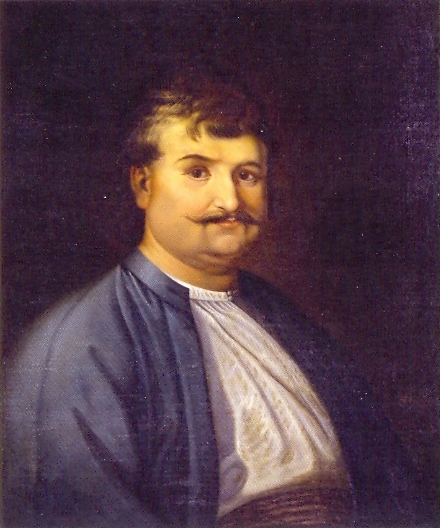

Grecce 200 Drachmai 1996 XF
Front: Rigas Velestinlis, People playing and singing; "The one who thinks freely, thinks well";
Back: "The Secret School" An oil painting by Nikolaos Gyzis;
 Nicholaos Gysis (Greek, 1 March 1842-1901) is considered one of Greece's most important nineteenth century painters and is most famous for his work Eros and the Painter: his first genre painting, recently auctioned at Bonhams in London and last exhibited in Greece in 1928. He is the major representative of the Greek 19th century art movement of the Munich School.
Nicholaos Gysis (Greek, 1 March 1842-1901) is considered one of Greece's most important nineteenth century painters and is most famous for his work Eros and the Painter: his first genre painting, recently auctioned at Bonhams in London and last exhibited in Greece in 1928. He is the major representative of the Greek 19th century art movement of the Munich School.He was born in the island of Tinos which has a long artistic history. He then came to Athens to study at the Athens School of Fine Arts.
In 1865, having won a scholarship, he went to continue his studies at the Academy of Fine Arts, Munich, where he settled for the rest of his life. He was very soon incorporated into the German pictorial climate, and became one of its most characteristic representatives of the Greek artistic movement of the Munich School. This is expressed in the painting News of Victory of 1871, which deals with the Franco-Prussian War, and the painting Apotheosis i Thriamvos tis Vavarias (Apotheosis or Triumph of Bavaria).
From 1886 onward he was professor at the Academy of Munich, and gradually turned from the detailed realistic depictions towards compositions of a singularly impressionistic character. At the beginning of the 1870s returned to Greece for a period of several years, after which he produced a sequence paintings with more avowedly Greek themes, such as the Carnival at Athens and the Arravoniasmata Engagement Ceremony and a little later the painting After the destruction of Psara. Towards the end of his life, in the 1890s, he took a turn toward more religious themes, with his best known work of the later period being Triumph of Religion[1]. His works are today exhibited at museums and private collections in Greece, Germany and elsewhere.
Gysis' painting The Secret School was depicted on the reverse of the Greek 200 drachmas banknote of 1996-2001
 Rigas Feraios or Rigas Velestinlis was a Greek writer and revolutionary, an eminent figure of Greek Enlightenment, remembered as a Greek national hero, the first victim of the uprising against the Ottoman Empire and a forerunner of the Greek War of Independence.
Rigas Feraios or Rigas Velestinlis was a Greek writer and revolutionary, an eminent figure of Greek Enlightenment, remembered as a Greek national hero, the first victim of the uprising against the Ottoman Empire and a forerunner of the Greek War of Independence.He entered into communication with Napoleon, to whom he sent a snuff-box made of the root of a laurel tree taken from the temple of Apollo, and eventually he set out with a view to meeting the general of the Army of Italy in Venice. While traveling there, Feraios was betrayed by Demetrios Oikonomos Kozanites, a Greek merchant,[2] had his papers confiscated, and was arrested at Trieste by the Austrian authorities (an ally of the Ottoman Empire, Austria was concerned the French Revolution might provoke similar upheavals in its realm and later formed the Holy Alliance). He was handed over with his accomplices to the Ottoman governor of Belgrade where he was imprisoned and tortured. Immediately on arrest he attempted suicide. From Belgrade, he was to be sent to Constantinople to be sentenced by Sultan Selim III. While in transit, he and his five collaborators were strangled to prevent their rescue by Feraios' friend Osman Pazvantoğlu. Their bodies were thrown into the Danube River. Feraios' last words are reported as being: "I have sown a rich seed; the hour is coming when my country will reap its glorious fruits".
Information and Image Obtained From Wikipedia, the free encyclopedia
No comments:
Post a Comment